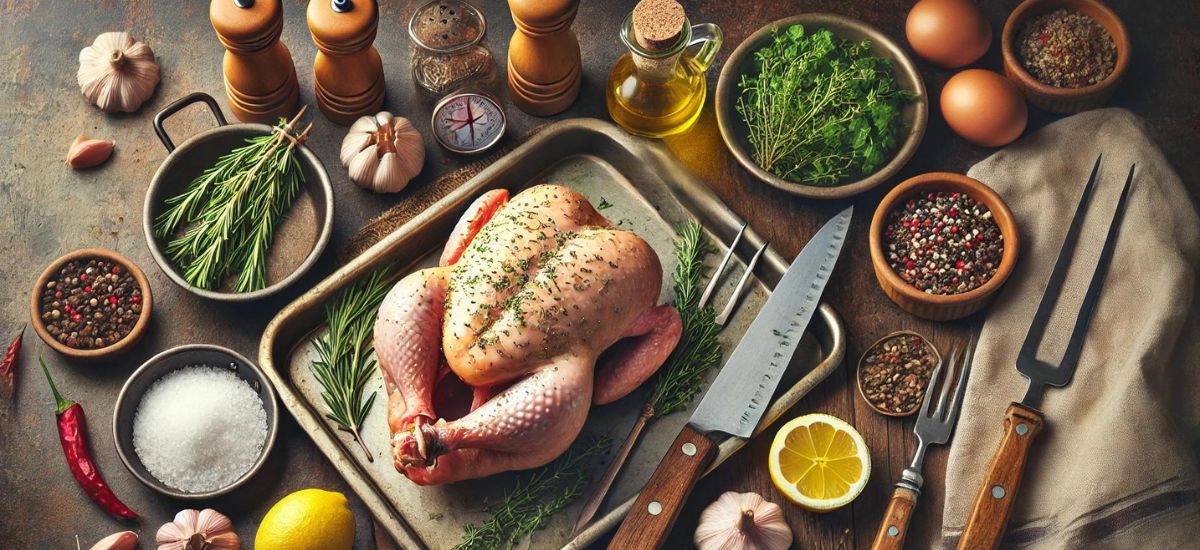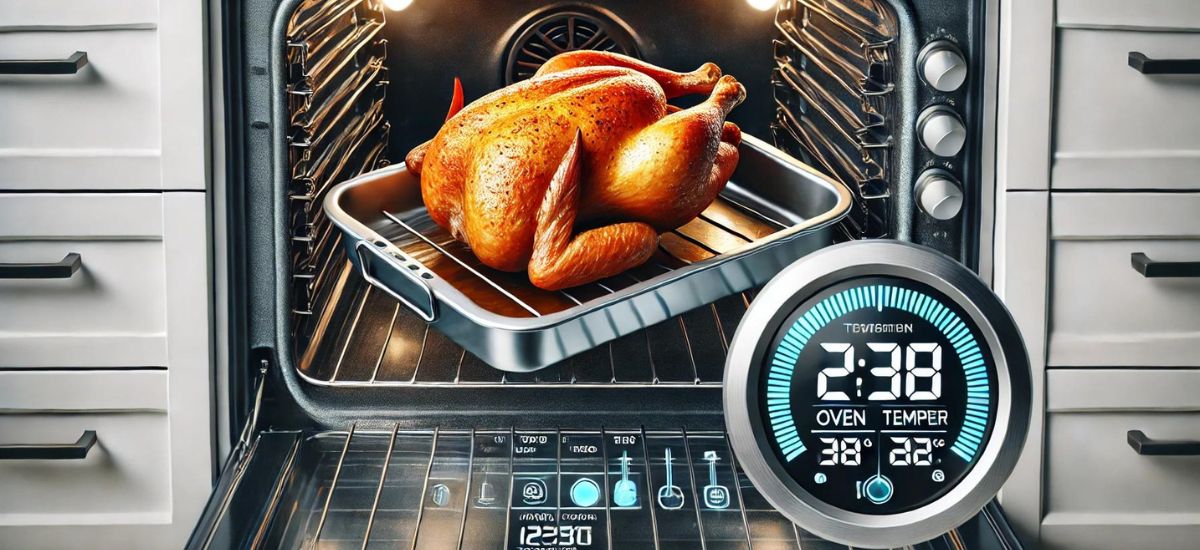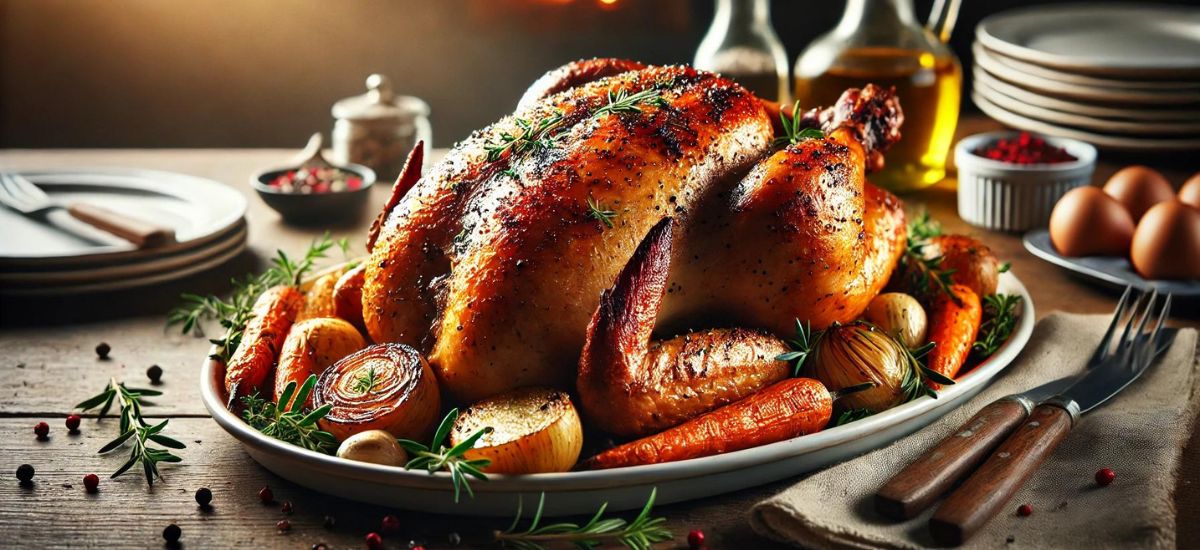Making a succulent roast chicken involves selecting a high-quality bird, preparing it with proper trussing, and flavoring it generously inside and out with herbs, spices, and butter. The key to a perfect roast chicken lies in roasting at a high temperature to crisp the skin while maintaining juicy meat by basting regularly. Checking for doneness with a meat thermometer ensures it’s perfectly cooked. Allow the chicken to rest before carving to redistribute the juices. Serve your golden, flavorful roast chicken with complementary sides for a truly satisfying meal that embodies the essence of home cooking.
Choosing the Right Chicken
Selecting the right chicken is pivotal for your roast to come out perfectly succulent:
- Type of Chicken: Opt for a free-range or organic chicken if possible. These chickens generally have better flavor and texture due to their healthier living conditions and diet.
- Size Matters: A smaller bird, typically around 3 to 4 pounds, often cooks more evenly and stays juicier. If you’re cooking for a crowd, consider roasting two small chickens rather than one large one.
Essential Ingredients and Tools

Having the right ingredients and tools on hand makes the process smoother and the results better:
- Ingredients: Stock up on some kitchen staples like fresh herbs (thyme, rosemary, sage), garlic, good quality butter or olive oil, salt, and pepper.
- Tools: You’ll need a sturdy roasting pan that can handle high heat, a roasting rack to elevate the chicken for even cooking, and a meat thermometer to ensure your chicken is cooked perfectly.
Preparation Techniques
Proper preparation sets the stage for a perfectly roasted chicken:
- Trussing: Tying the legs together and tucking the wing tips under the body helps the chicken cook evenly and maintains a good shape.
- Marinating/Brining: Optional but beneficial. A simple brine of salt water or a marinade of herbs, garlic, and oil can enhance the flavor and juiciness of the chicken.
Seasoning the Chicken
The right seasoning brings out the best in your roast chicken:
- Under the Skin: Gently loosen the skin and push herb butter or a mixture of olive oil and herbs directly onto the meat to infuse flavor deep into the chicken.
- Inside and Out: Season the cavity generously with salt, pepper, and aromatics like lemon halves and garlic cloves. Rub the exterior with oil or melted butter and your choice of herbs and spices to ensure a crispy, flavorful skin.
Roasting Techniques

Achieving the perfect roast involves careful cooking:
- Oven Temperature: Preheat your oven to a high temperature (around 425°F or 220°C) to start. This initial high heat helps to crisp the skin.
- Positioning: Place the chicken breast-side up on a rack in the roasting pan. Starting breast-side down and then flipping can help some parts cook without drying out, but it’s optional based on your preference.
- Cooking Time: Roast the chicken for about 90 minutes, depending on its size. Baste the chicken periodically with its juices to keep it moist.
Checking for Doneness
Ensuring your chicken is perfectly cooked is crucial:
- Meat Thermometer: Insert a meat thermometer into the thickest part of the thigh. The chicken is done when it reaches 165°F (75°C).
- Visual Cues: The skin should be golden and crisp, and the juices should run clear when you pierce the thigh with a knife.
Serving Suggestions
Present your roast chicken with flair:
- Resting: Let the chicken rest for at least 10 minutes after roasting. This allows the juices to redistribute throughout the meat, making it juicier.
- Carving: Carve the chicken into breasts, thighs, wings, and legs. Serve on a platter garnished with fresh herbs and lemon slices for a touch of elegance.
Storage and Leftover Ideas
Maximize the enjoyment of your roast chicken with these tips:
- Storing: Cool any leftovers quickly and refrigerate within two hours of cooking. Store in an airtight container for up to three days.
- Reinventing Leftovers: Leftover chicken is versatile—use it in sandwiches, salads, soups, or pasta dishes to extend the flavors throughout the week.
Troubleshooting Common Issues
Avoid common pitfalls with these tips:
- Avoiding Dry Meat: Don’t overcook the chicken, and ensure you let it rest before carving to keep the meat moist.
- Ensuring Crispy Skin: Pat the skin dry before seasoning and roasting, and don’t cover the chicken with foil as it roasts.
Frequently Asked Questions
Q1. How can I make sure the skin gets crispy?
Ans: Make sure the skin is dry before you season it and keep the oven temperature high.
Q2. Can I roast a chicken without a roasting rack?
Ans: Yes, you can place chopped vegetables under the chicken to elevate it slightly and add flavor.
Conclusion
Mastering the roast chicken is a skill that pays off with deliciously versatile results. It doesn’t matter if this is your first roast or if you’re perfecting your technique, each roast promises a delicious and nourishing meal.


